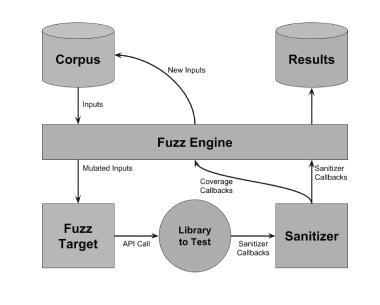In the world of software development, testing is an integral part of the process. One such testing technique that has gained significant attention in recent years is fuzz testing. Fuzz testing, also known as fuzzing, is a software testing technique that involves sending random, unexpected inputs to a software application to detect potential vulnerabilities or bugs. Fuzz testing is a concept that dates back to the 1980s, although it has lately become increasingly popular as concerns about cybersecurity risks have grown.
Software testing is a crucial step in the creation of software since it helps guarantee that the programs work as intended and are free of flaws and vulnerabilities. Traditional testing approaches might not always find all vulnerabilities, particularly those brought on by unexpected inputs. By producing random input data to imitate real-world use scenarios and spot any unexpected behavior, fuzzy testing fills this gap. Fuzz testing, therefore, contributes to raising the general level of quality and security of software programs.
In the parts that follow, we’ll go more deeply into the idea of fuzz testing and examine its technical facets, benefits, and implementation best practices.
What is Fuzz Testing?
Fuzz testing is a software testing technique that involves generating random input data to simulate real-world usage scenarios and detect potential vulnerabilities or bugs. Fuzz testing is used to find unexpected behaviors or input combinations that conventional testing techniques can miss. The method is often used to test software programs that take input data from external sources, including network protocols, file formats, and user interfaces.
Input data with unexpected values, such as random strings, integers, or special characters, are created and fed into the software application as part of the fuzz testing process. The behavior of the program is then observed in order to spot any unexpected or wrong outcomes, such as crashes, memory leaks, or security flaws. To swiftly test several scenarios and produce enormous volumes of input data, the procedure is often automated.
Fuzz testing works best when applied to software programs that are highly susceptible to security flaws, such as network protocols, email clients, and web browsers. It may also be used to evaluate software programs that utilize external data sources or have complicated input requirements. Fuzz testing is a helpful method to make sure the game is free of defects and security vulnerabilities since, for instance, a game that accepts input from a controller or network may be exposed to unexpected input data.
How Does Fuzz Testing Work?
Fuzz testing simulates real-world use circumstances and generates a huge volume of random input data to find possible flaws or faults. The procedure entails giving the software program input data and tracking its behavior. If the program reacts in an unexpected way, such as by crashing or producing inaccurate data, it can be a sign that there is a vulnerability that needs to be fixed.
Fuzz testing methods come in a variety of forms, including hybrid, generational, and mutational fuzzing. In order to generate new test cases, mutation-based fuzzing modifies the input data that is already there. Generating brand-new input data using grammar or other rules are known as generation-based fuzzing. By combining both methods, hybrid fuzzing creates new data by applying rules to previously existing data.


Also, there are a number of tools for fuzz testing, including libFuzzer, Peach Fuzzer, and AFL (American Fuzzy Lop). These tools automate the fuzz testing procedure and provide developers with a rapid and effective approach to testing their software programs. Moreover, they include capabilities like coverage analysis, which identifies the portions of the software program that have been tested and crash analysis, which aids developers in determining the reason why any crashes occur when testing.
In addition to using automated technologies, skilled engineers who can generate unique input data and examine the behavior of the program may also undertake manual fuzz testing. While it may take more time, this method may result in testing findings that are more thorough. Developers have a variety of alternatives for testing their software applications to make sure they are free of flaws and vulnerabilities, thanks to the many fuzz testing methodologies and tools.
Advantages of Fuzz Testing
Fuzz testing has a number of benefits for software development, including the capacity to find faults and vulnerabilities that conventional testing techniques can overlook. Spotting problems early on in the development process, before they become more expensive to address, it may also help save time and money in the long term. Fuzz testing is also a crucial technique for guaranteeing software security, since it may spot possible flaws that hackers might use against you.
Fuzz testing’s capacity to find problems and vulnerabilities that may not be noticeable using conventional testing techniques is one of its key advantages. Fuzz testing simulates a variety of real-world circumstances, including ones that may not be explicitly tested during development, by producing random input data. This method may assist in finding problems that could have gone missing otherwise and guarantee that the software program is operating as intended.
Fuzz testing may help to increase the quality of software while also saving time and money in the long run by spotting problems early in the development cycle. Early bug and vulnerability detection allow developers to correct issues before they become more difficult to repair. In the end, this might aid in cutting expenses and development time, while also raising the overall caliber of the software product.
Another important method of software security is phase testing. Phase testing can help developers proactively address security issues and secure their software applications by identifying possible vulnerabilities and attack vectors. Using this strategy, you can protect user data and avoid serious security breaches that can be costly to fix. Ultimately, the benefits of fuzz testing make it an essential approach to software development, especially in areas such as game development and programming where a high degree of security and reliability is required.

Limitations of Fuzz Testing
Fuzz testing has various drawbacks even though it may be an effective technique for finding faults and vulnerabilities in software programs. The fact that fuzz testing can only test the components of an application that are accessible to input data is one of its major constraints. This implies that any flaws not connected to input data may go unnoticed. Fuzz testing may not be successful in locating the problem, for instance, if the code has a logic fault unrelated to the input data.
Fuzz testing has the additional drawback of producing false positives or false negatives. When the fuzz test detects a problem that isn’t truly a bug or vulnerability, this is known as a false positive. False negatives, on the other hand, happen when a flaw or vulnerability is not really found by the fuzz test. These inaccurate findings may be an issue since they waste time and money and may let security flaws go undetected.
In certain circumstances, such as when the software program is very complicated or when the input data is difficult to obtain, fuzz testing may not be useful. Other testing techniques, such as manual testing or static analysis, may be more useful in certain circumstances.
Fuzz testing may miss certain software flaws, such as those involving authentication, authorization, and secure communication as well as flaws in encryption. To find and fix these vulnerabilities, further testing techniques, such as penetration testing, may be necessary.
It should be noted that fuzz testing has its limitations, even though it can be a useful technique for finding defects and vulnerabilities in software systems. To achieve full software security and reliability, developers must consider these limitations when choosing testing strategies and complement fuzz testing with other approaches as needed.
Best Practices for Fuzz Testing
There are various recommended practices that developers should adhere to in order to guarantee that fuzz testing is successful in locating flaws and vulnerabilities in software applications. Developers must first make sure that the input data used for fuzz testing is thorough and realistic. This entails producing inputs that mirror real-world use patterns and using a range of input data types.
Automating the fuzz testing procedure as much as feasible is another great practice. This may improve the testing’s accuracy and consistency while also saving time and money. The most important components of the program, such as those that handle sensitive user data or carry out necessary functionality, should also be prioritized by developers and given special attention during testing.

Fuzz testing must be integrated into the software development process in order for it to be successful. Fuzz testing has to be done often at all stages of development, including design, coding, and testing. Developers may find and fix faults and vulnerabilities early in the software development cycle by including fuzz testing in the process. This lowers the likelihood that problems will be included in the finished product.
Fuzz testing has been effectively included by a number of businesses in their software development process. Fuzz testing, for instance, has been used by Microsoft to find and patch a number of security flaws on Windows and Internet Explorer. To verify the security and dependability of its products, including Chrome and Android, Google also makes considerable use of fuzz testing.
It should be noted that finding and fixing defects and vulnerabilities in software applications can be accomplished by following best practices and incorporating fuzz testing into the software development process. Companies can use this to improve the security and reliability of their products, which is critical in today’s digital environment.
Future of Fuzz Testing
Since its origin, fuzz testing has advanced significantly, and as the world of software development develops, so does the practice of fuzz testing. The use of machine learning and artificial intelligence (AI) to further automate the testing process and increase its efficacy is one new trend in fuzz testing. Developers may design more focused and effective testing techniques employing AI algorithms, which will cut down on the time and resources required for fuzz testing.
Integration of dynamic analysis tools, which examine the behavior of the program while it is operating, is another development in fuzz testing. This method may provide developers with a more thorough insight into how the program responds to various scenarios, enabling them to spot and fix problems that conventional fuzz testing methods could miss.
Fuzz testing is developing in response to the particular difficulties brought on by cutting-edge technologies like the Internet of Things (IoT) and autonomous systems. Fuzz testing must change to meet the enormous number of possible input sources and the intricate interconnections between devices as IoT devices become more pervasive. Similarly to this, as autonomous systems proliferate, fuzz testing must be able to take into account their unpredictable nature.
With new trends and technologies like machine learning, dynamic analysis, and IoT-focused testing becoming more popular, fuzz testing is evolving to match the changing demands of software development. Fuzz testing will remain a vital technique for finding and fixing flaws and vulnerabilities, maintaining the security and dependability of software applications as the landscape of software development changes.
Final Thoughts
In conclusion, fuzz testing is an important technique in software development that involves automatically inputting large amounts of random data into a program to identify vulnerabilities and flaws that might not be found through traditional testing methods. In the long term, fuzz testing may save time and money by quickly identifying defects and security flaws.
While it has its drawbacks and is not a cure-all, fuzz testing is a crucial tool for every software development effort. Developers should adhere to best practices, such as beginning fuzz testing early in the development process, employing a range of test cases, and continuously improving and updating test cases, to make the most of fuzz testing.
As the field of software development continues to evolve, so too will fuzz testing. Fuzz testing is anticipated to become more crucial in the future as emerging trends and technologies like machine learning and artificial intelligence enable developers to find and repair problems more rapidly and effectively than ever before.
At Eventyr, we specialize in game creation and programming, and we can assist you in realizing your vision. We are dedicated to providing the finest outcomes for your project with a highly qualified professional staff that works under your control. For more information on how we can assist you in advancing your project, contact us right now.




